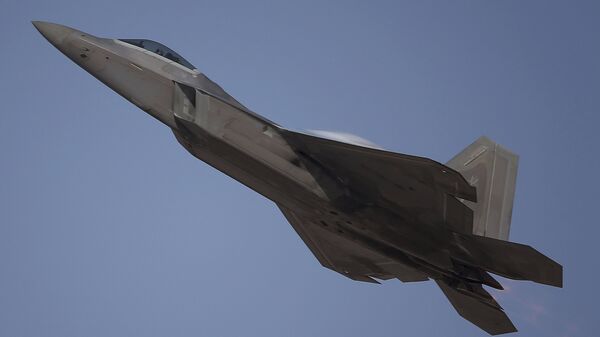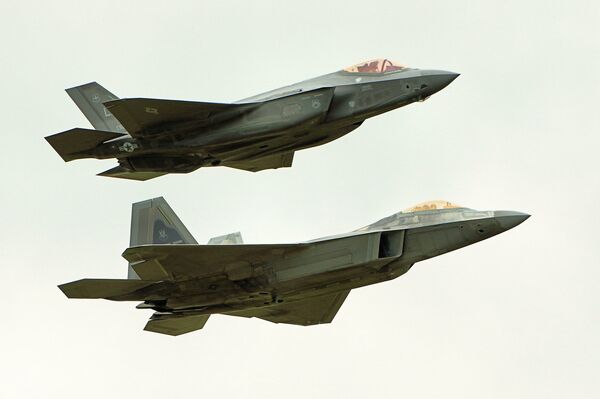An F-22 fighter jet, with its low observable (LO; also known as "stealth") material cracking and chipping on the plane's nose, was spotted by a reporter with The Drive magazine during the EAA Airventure Air Show in Wisconsin. The photo of the plating right under the canopy reveals how much has it succumbed to corrosion, air friction, and the extreme pressure that the aircraft endures when in flight.
These images of an F-22 Raptor's crumbling radar absorbent skin are fascinating:https://t.co/cmfeo9Tckf
— Tyler Rogoway (@Aviation_Intel) July 31, 2019
The magazine revealed that these environmental factors are responsible for most of the situations where the stealth material starts peeling off the plane's hull. The Drive revealed that the maintenance of the LO coating is one of the things that makes using the F-22 highly expensive - around $60,000 per hour.
Not only does it require expensive materials that allow the jet to absorb most radar waves and remain undetected, but also a lot of time to apply it on the F-22's components, according to the media outlet. In addition, the process must be done under certain environmental conditions, at certain temperatures and humidity levels, in order to be successful, and many US military bases don't have that luxury. Closed bays with a regulated atmosphere help with this issue, but the number of these is limited at each base.
This all adds up to the relatively low mission capable rate of the jet - only around 50% of the aircraft are ready to carry out sorties. The Drive noted that some of F-22s are deliberately excluded from regular LO coating maintenance, which usually takes place when over 10% of the stealth material is deteriorated. These jets are used for pilot training sessions and air shows, as they don't require radar protection, the magazine explained. The rest are kept in order to be ready for any mission that arises.



